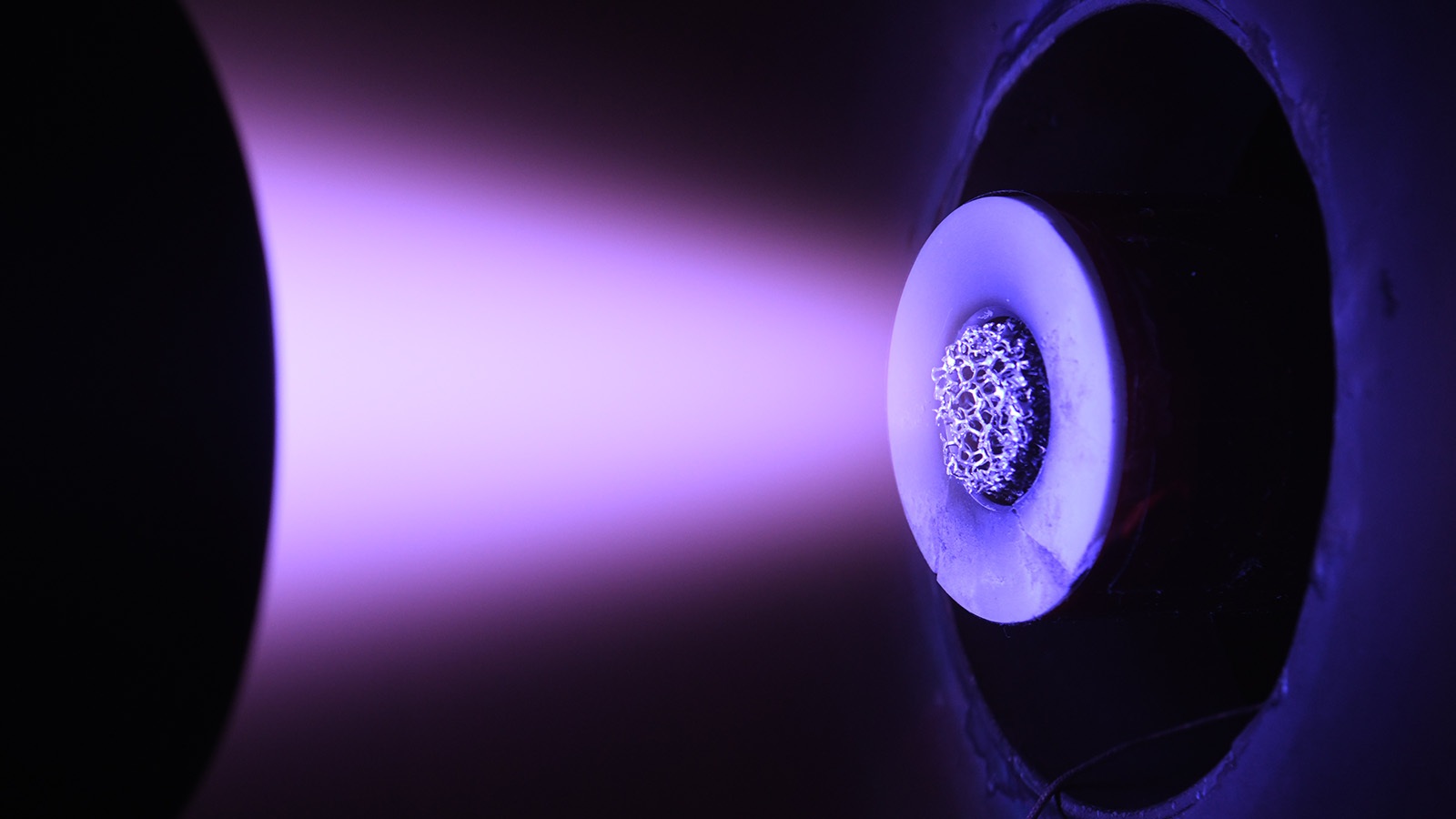Stay Up to Date
Submit your email address to receive the latest industry and Aerospace America news.
The Electric Propulsion Technical Committee works to advance research, development and application of electric propulsion for satellites and spacecraft.
The electric propulsion community had a landmark year with new discoveries, flight systems deployed at historic levels and multiple first flights of novel technologies.
The Wirz Research Group at the University of California, Los Angeles, discovered plasma-infused materials that may enable higher energy density systems. NASA also initiated the Joint Advanced Propulsion Institute, or JANUS, with team members from Georgia Tech, the University of Michigan, UCLA, the University of Illinois, Colorado State University, Pennsylvania State University, the University of Colorado, Stanford University and Western Michigan University, to address challenges with implementation and testing of high-power devices.
Massachusetts-based Busek completed the BET-MAX electrospray system design with two flight units awaiting qualification. Applied Ion Systems of New York demonstrated a 26-watt Hall system using sublimated adamantane. North Carolina-based Froberg Aerospace and the University of Illinois demonstrated a chemical-electric multimode thruster. While NASA’s Marshall Space Flight Center in Alabama, working with part Canada-based Espace Inc., Georgia Tech, the Massachusetts Institute of Technology and Alabama-based Plasma Processes, demonstrated an integrated multimode system with both a refillable electrospray system and combustion engine using advanced spacecraft energetic nontoxic propellant.
The European Space Agency initiated the Mars Sample Return Earth Return Orbiter, building on the BepiColombo mission with a 35-kilowatt system of four Arianegroup RIT-2X radiofrequency ion thrusters. BepiColombo accumulated 5,000 hours of thruster operation partway through its journey to Mercury.
NASA Jet Propulsion Laboratory’s lanthanum hexaboride hollow cathodes demonstrated 500 amperes discharge currents sufficient to support 200kW Hall thrusters, while JPL’s Ascendant Sub-kW Transcelestial Electric Propulsion System thruster demonstrated 1.3 meganewton-seconds total impulse, processing 82 kilograms of xenon over 6,300 hours of operation, targeting 100 kg Xe throughput this year.
The assembling and testing of NASA’s Psyche spacecraft with the SPT-140-based subsystem began in March. NASA’s Power and Propulsion Element, using Aerojet Rocketdyne’s 13kW and Busek’s 6kW Hall thrusters, completed the spacecraft preliminary design review. The engineering hardware completed qualification-level testing on a path to propel the PPE, built by Colorado-based Maxar Technologies, to lunar orbit, critical toward building NASA’s lunar Gateway.
Busek completed a 3,500-hour test of its iodine BIT-3 thruster in January; two units are ready for launch aboard NASA’s Space Launch System.
NASA and the U.S. Space Force worked to modify NASA’s Evolutionary Xenon Thruster Commercial technology to double power and increase thrust density by 40%. The current system, built by Aerojet Rocketdyne, and its power processing unit, built by ZIN Technologies, were joined to NASA’s Double Asteroid Redirection Test spacecraft at the Johns Hopkins University Applied Physics Laboratory and shipped to Vandenberg Space Force Base in California for a scheduled November launch.
T4i of Italy saw its REGULUS iodine thruster launched on the UNISAT-7 cubesat dispenser in March, following France-based ThrustMe’s demonstration of an iodine electric propulsion system in space in 2020.
As of August, the community had doubled all operating electric propulsion systems in a single year. Northrop Grumman’s Mission Extension Vehicle-2 reached geosynchronous orbit propelled by Aerojet Rocketdyne’s 3kW XR-5 thrusters and docked with an Intelsat spacecraft for life extension. By November, the SpaceX Starlink constellation had deployed more electric propulsion spacecraft than all previous electric propulsion flights combined, for a total of about 1,800 satellites on orbit. Finally, the June launch of the SpaceX Falcon 9 Transporter-2 mission included electric propulsion systems from Accion, Apollo Fusion, Enpulsion, Exotrail and Phase Four. These included, respectively, micro-electrospray propulsion, a magnetic shielded Hall thruster, a field emission thruster, a cubesat Hall thruster and the first electrodeless commercial radiofrequency thruster operated in space.
Stay Up to Date
Submit your email address to receive the latest industry and Aerospace America news.




